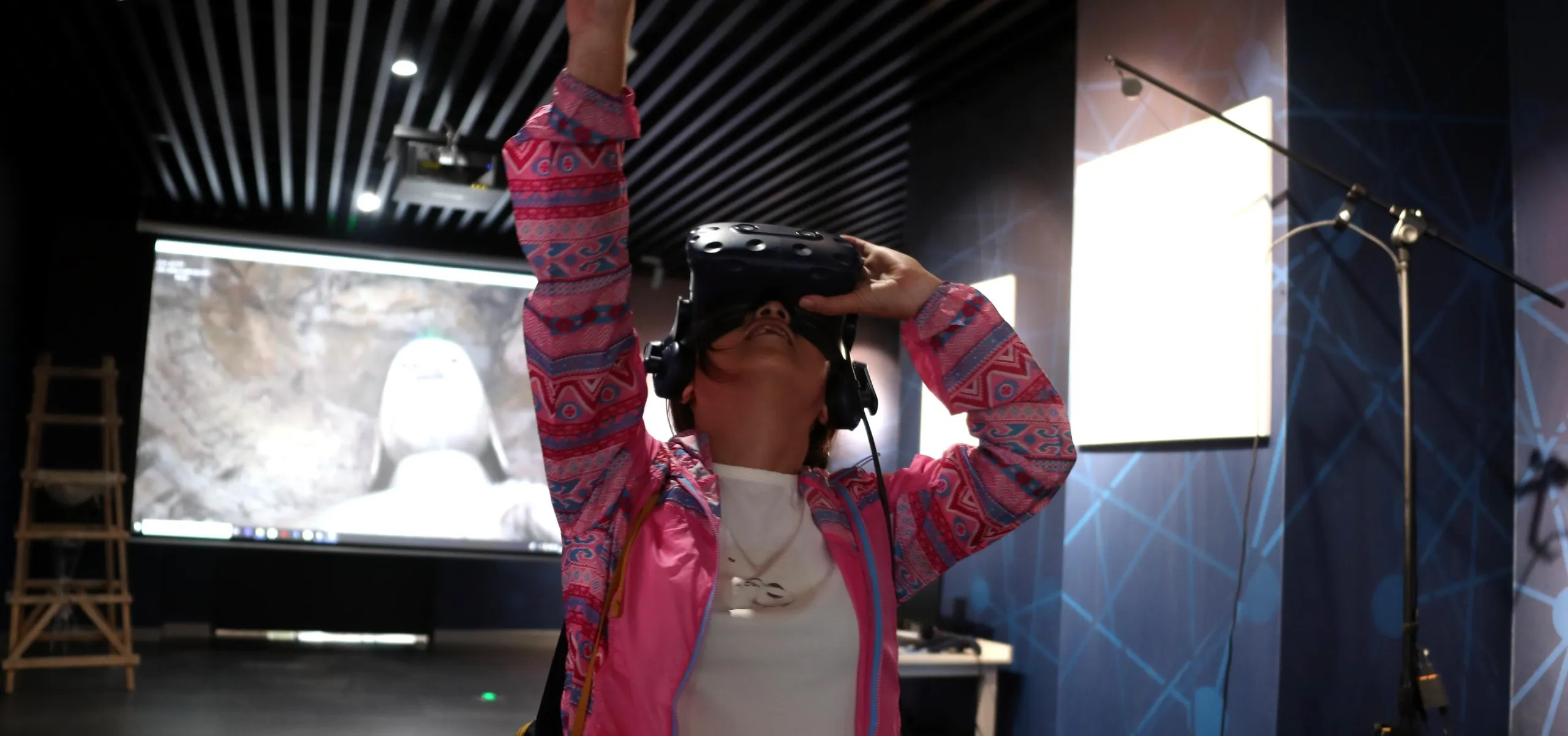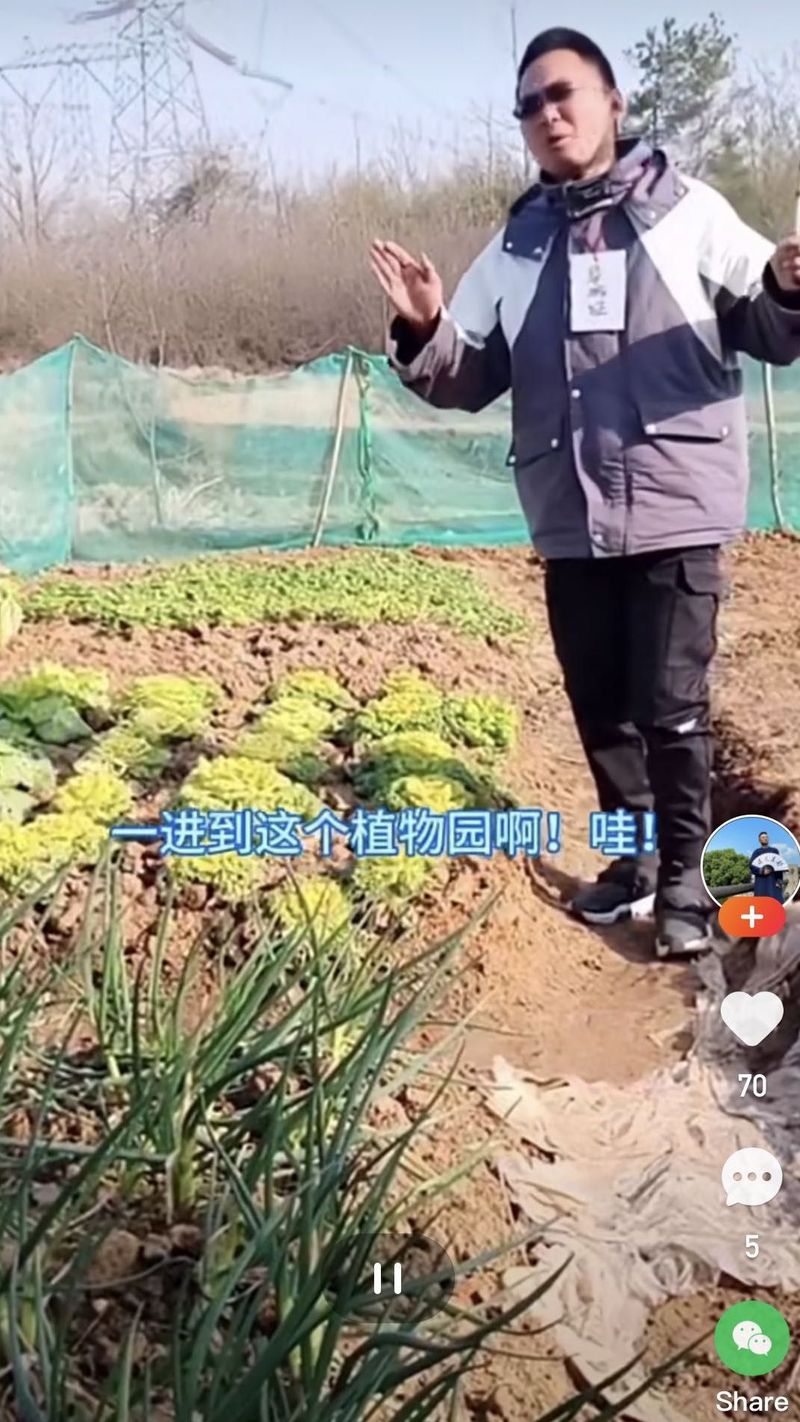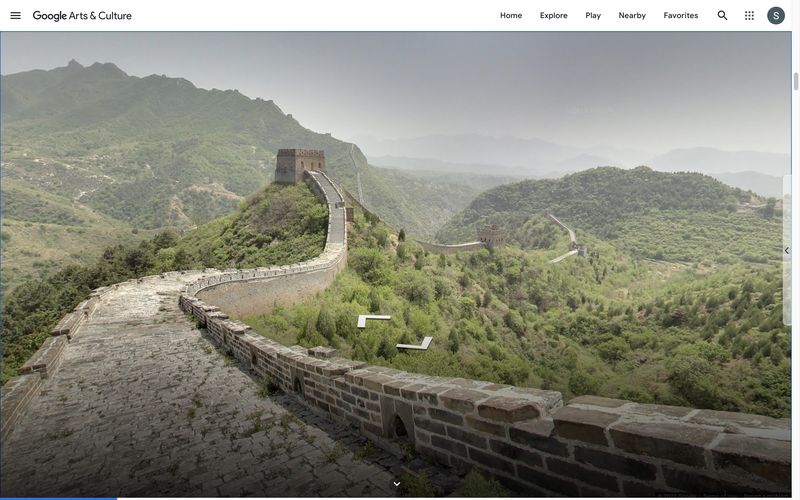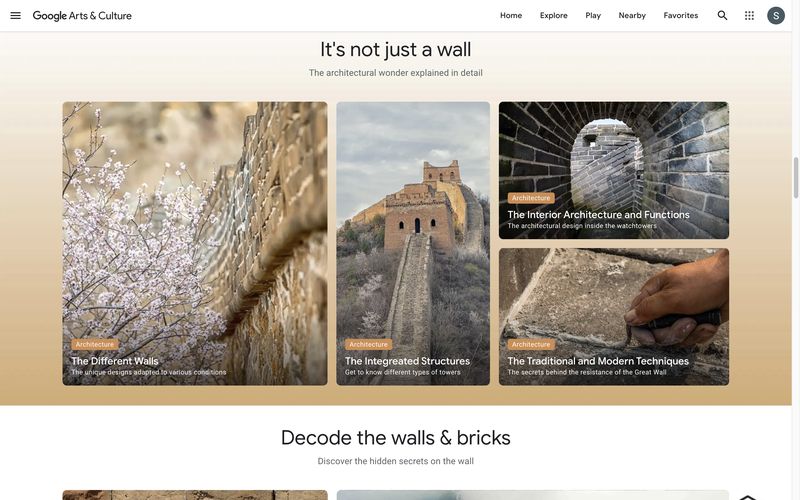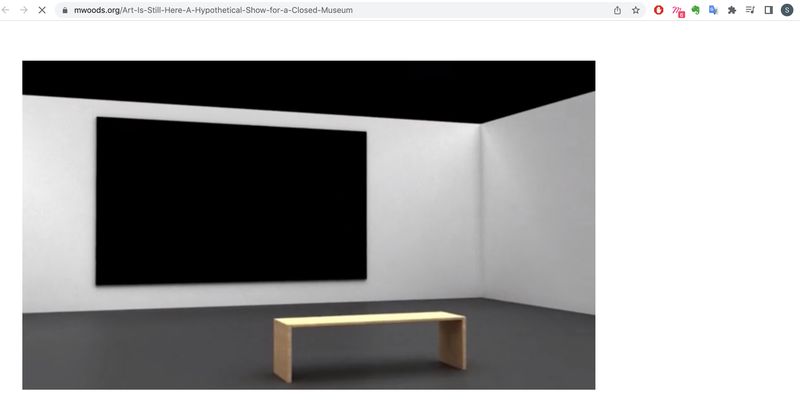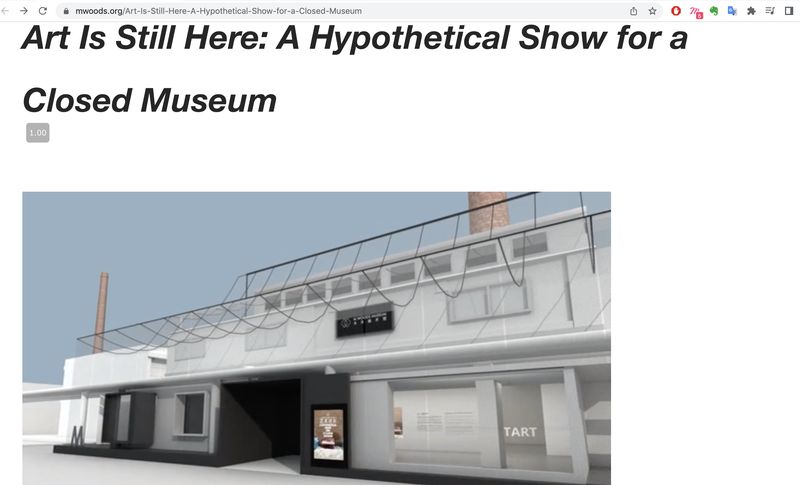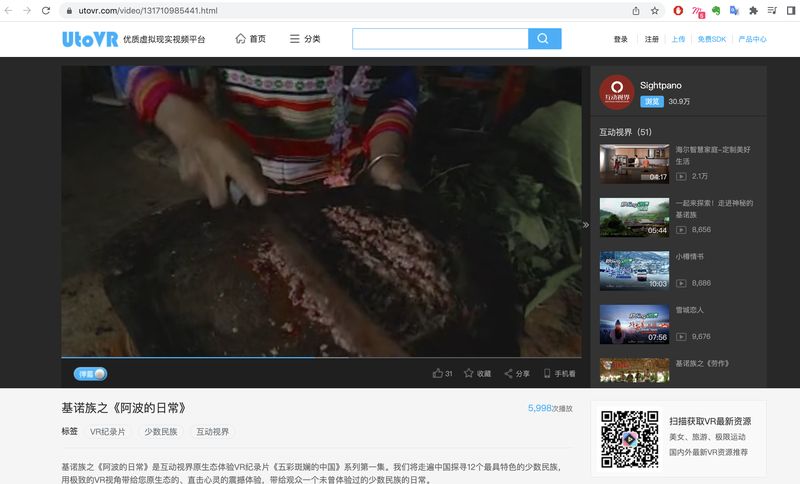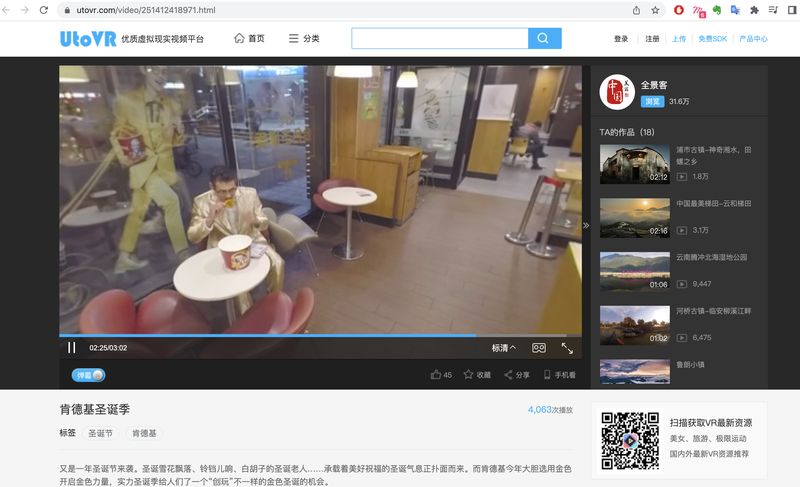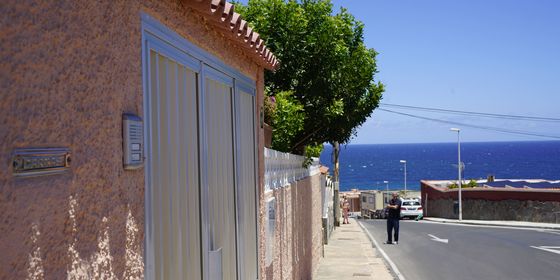The most off-beat virtual experiences for the locked down tourist
Turquoise tour flag in one hand and a piece of white paper sketched with the characters “Tour Guide Certificate” hanging around his neck, Zhang Zhenhao, a man in his late 30s fitted with sunglasses and sports jacket, is introducing local “botanical life” with passion.
Guides like Zhang can be found in almost every scenic site around China, usually leading a group of retirees with a packed itinerary of famous “must-see” historic attractions. The only difference today is that Zhang is alone, standing in a crummy vegetable garden as he presents patches of scallions and cabbages to an invisible audience on video-sharing platform Kuaishou. “Wow, we are so stunned here! Why? Because there are so many rare botanic species!” he says to camera.
Zhang, a professional tour guide, made this short video as part of a series of parody tours called “Cooped-up Tour Guide” in 2020, when he was stuck in his hometown in rural Anhui during the first wave of Covid-19. With the tourism industry hard hit by the pandemic, Zhang began making videos that showed netizens around spots in his village, which he calls, tongue-in-cheek, the “Zhenhao International Resort.”
Just as Zhang has risen up to use his talent to provide visual tours online—now back in Nanjing, he still offers video tours on Kuaishou and enjoys 271,300 followers—plenty more virtual tours have emerged in China, helping would-be tourists get their traveling fix while stuck at home. In Fall 2020, an 8-hour video tour of the Forbidden City, run by the Palace Museum and streamed on CCTV, drew in two million viewers.
If you are currently stuck in a Chinese city living through yet another Covid-19 outbreak, or unable to visit China at all with borders all but closed to travelers, fear not: From an immersive walk on the Great Wall, to a virtual art exhibition, TWOC tried out a host of virtual tourism options, and reviews them for you below:
A stroll on the Great Wall
Buckle up. This is going to be “a 2,000 year and 20,000 kilometer trip from your home,” reads a statement on top of this website, “Walk the Great Wall,” run by Google Arts and Culture.
The tour starts, as any good tour should, with background information, including “10 Things to Know about the Great Wall of China.” From the materials used in construction of the Wall to the legend of Lady Mengjiang, a woman whose husband died building the Wall (spoiler: she cried so hard for her husband that part of the Wall crumbled), this section covers everything your guide would normally have mentioned during the bus ride to the Wall. But this time you aren’t half-conscious while trying to catch up on sleep!
The main section of the website is titled “Walk the Great Wall Now.” One click of a button that says “Start your journey” takes us to a page that introduces the section we are about to (virtually) traverse: Simatai, just 120 kilometers northeast of the city of Beijing, one of the most well preserved sections of the Wall. Then, the scene changes, and we are teleported right there, dropped in between two watchtowers.
As we turn our heads around…I mean, drag our mouses left and right, to explore this 360-degree view, a screen of green unfolds hill after hill, stitched together by the meandering beige colored wall. The slightly hazy sky might just make us believe we are truly in Beijing—or is that just a result of a poor quality laptop screen? We could turn around and take a couple more stairs upward, but the view in front is already quite magnificent—almost undeserving, without the usual short breath, sweat drenched t-shirts, and sore joints that’s usually required to get a view like this.
Back on the main page of the project, visuals and articles on how the Wall was built, the easternmost and westernmost points of the Wall, and architecture types of the wall do a great job in supplementing the immersive tour with deep-dives. There’s also an explanation here for any mysterious carved patterns on masonry (such as a broken qilin) or brick carving (someone’s signature?) that made us go “hmm” had we spotted them on the virtual tour. Perhaps without the summer heat, hiking fatigue, and incessant sales pitches from souvenir vendors, we’ll find these facts easier to gulp down.
A hypothetical show for a closed museum
Who says virtual tours have to lead us to somewhere real? The M Woods Museum has constructed a totally virtual exhibition, aptly titled “Art Is Still Here: A Hypothetical Show for a Closed Museum,” taking place in a 3D virtual replica of M Woods’ central Beijing location.
Opened on February 13, 2022 and still ongoing, the exhibition currently boasts 50 participating artists from around the world whose works are themed around “ecology, nature, extinction, isolation and kinship,” according to the exhibition statement. This is “a long term experimental visual project,” the statement continues.
The artworks include an interactive website where a string of emojis follows your cursor’s movement, a video of Istanbul from the perspective of a dog, a mix tape of 10 tracks that the artist describes as a “conversation with the past and a reflection on the present…A Delicate Rage”...whatever that means.
Clicking on a link that says “ROOM 1【0213AC】,” we enter the exhibition hall where our first surprise awaits. The page shows thumbnail images for each artwork exhibited in this section, followed by artist biographies and work synopses, and a tour video of the room. It opens with the scene of a man bragging about a tacky mobile game: perhaps an experiment by an artist we don’t know about? But 15 seconds later, this turns out to be an ad embedded in Tencent, the platform that houses the museum videos.
The actual video, which plays after the ad is over, guides us like a spirit floating through the corridors. We enter a room outfitted with a big screen and, oddly, a bench, though we certainly have no need for one. An auto-generated female voice reads out the artist’s biography with all the wrong accents and intonations. It even tirelessly reads out a whole URL, “...tee, dash, ay-ch, dash, ee, dash…dot, com…”
You might want to skip forward already at the third “dash,” but hey, perhaps that, again, is part of the experiment. Imagine, if our brains were uploaded to the cloud right now, with the still immature infrastructure up there, could this be just how we would feel when we interact with an exhibition?
But this experimental curation of experimental art has decided to stick with the most conventional form of setup—white cubic gallery rooms with pieces shown out of context, albeit introduced by a robot—though one imagines that an exhibition that takes place in a virtual landscape could create much more outrageous forms of presentation.
Perhaps it’s preemptive nostalgia for our analog world, in which large expensive physical spaces for art still have some value.
A border village, a graduation, a KFC, and more 360-degree holes-in the-wall
As more and more people get their hands on VR technology, established tourist sites and museums no longer monopolize the world of virtual tours, and immersive experiences are seeping into more unexpected corners.
Set just north of China’s border with Myanmar in the southwestern province of Yunnan, a VR documentary called The Daily Life of Abo follows around a woman of the Kino ethnic group, presumably the titular Abo. We can take 360-degree views of every scene, and see Abo as she hacks away at a Japanese banana tree, preps for a meal, eats with her family, and feeds livestock.
This type of virtual tour creates a guided structure, while still allowing for a degree of freedom of exploration. If we don’t want to stare at Abo slitting a chicken’s throat, we can turn around to explore the rest of the room, or look at the man sitting across the fire pit, who does nothing as Abo busies around.
We peek into the “daily life of an ethnic group which [we] have never experienced before,” as the video’s description suggests, but we don’t have a chance to do more beyond voyeuristic gazing. The tour doesn’t give this woman a back story, so we will never get to know who she is beyond the poster-child ethnic minority woman wearing colorful clothes and doing chores.
Going up north to Jilin province, we can also use VR technology to sneak into a college graduation, watching students pouring in to an outdoor plaza on campus wearing white shirts and red ties. When we turn around, we come across a pair of anticipatory parents, the mother dressed nicely in a floral white top and pearl necklaces, looking in the direction of the crowd. Then, we poke around the seemingly never ending group photo sessions, and find bouquets and balloons, lots of them.
Both of these tours are hosted on utoVR, a platform where users upload VR content. Another user-generated entry that might appeal to those stuck at home without the option to visit restaurants brings us into an unidentified KFC location, where people share plates of fried fast food across the tables. The video ends awkwardly with us being trapped in a corner, having to face a floating virtual ad screen that blocks out the rest of the restaurant.
UtoVR plots many more of these offbeat virtual experiences on a map of China: a dance class in Jiangxi province where children in tutus whip out K-pop moves; a tour around the newsroom of local newspaper in Xiamen, Fujian province; or the interior of a tobacco company. Nosy, or innovative? We’ll let you decide.
Before you hit the (virtual) road, here is a non-exhaustive shortlist of other VR tours worth a try:
- To see a surprisingly empty Forbidden City, this VR tour developed by the Palace Museum features detailed background information on the buildings and artifacts, and exquisite user interactions: like an illustrated map that unfolds when you click on the upper left-hand corner, or glowing clickable points of interest beckoning you to learn more.
- Bur for those who like the people watching, or simply miss the hustle and bustle of a major tourist site, then check out this other version of the VR Forbidden City, and imagine yourself squeezing through the crowds of fellow tourists
- Dunhuang’s Mogao Caves released Digital Dunhuang, on which you can home in and out of a large number of grottoes to view the murals up close in VR, without worrying that your flashlight might damage these ancient works
- If you are into lost ancient civilizations, hop on over to Sanxingdui Museum on the outskirts of Chengdu, Sichuan province. You will be able to check out the bronze, pottery, and jade excavations, and read everything on the walls and plaques along a pre-designated route.
- Another virtual art exhibition by the China Culture Center in Sydney features 12 Chinese artists and breaks free from the white cube mode, with one exhibit taking you straight to Mars. The environment of the exhibition is so novel and game-like, you might not even want to focus on the artworks.





